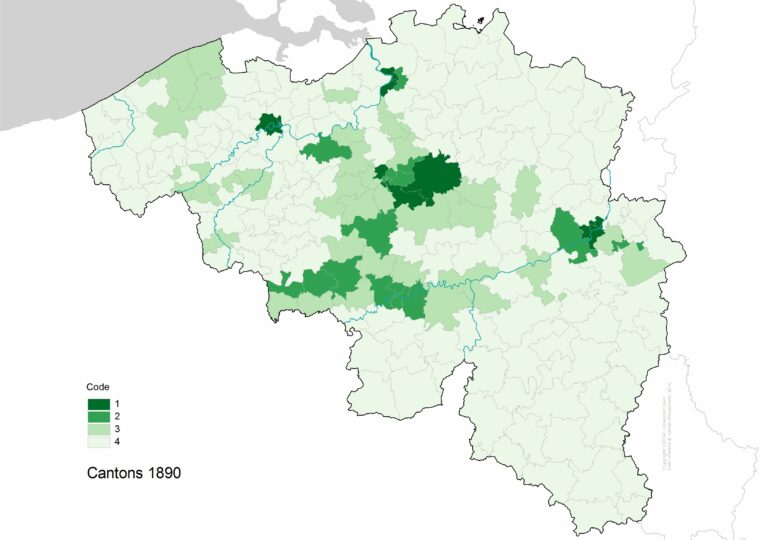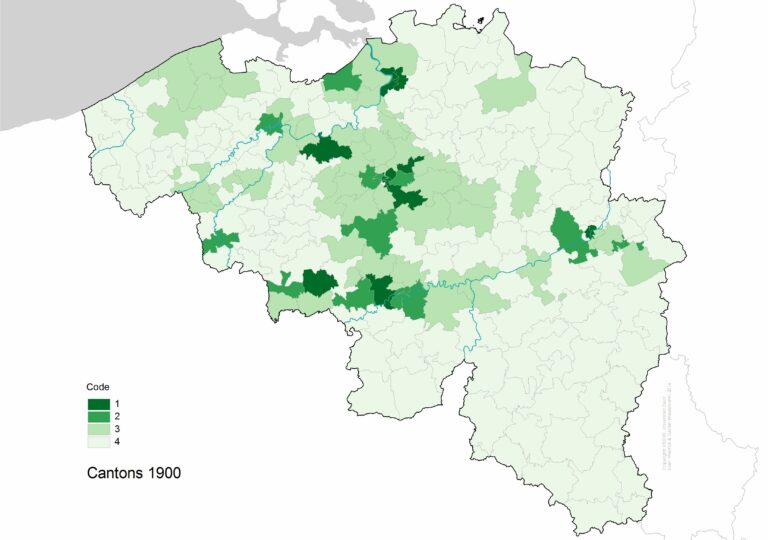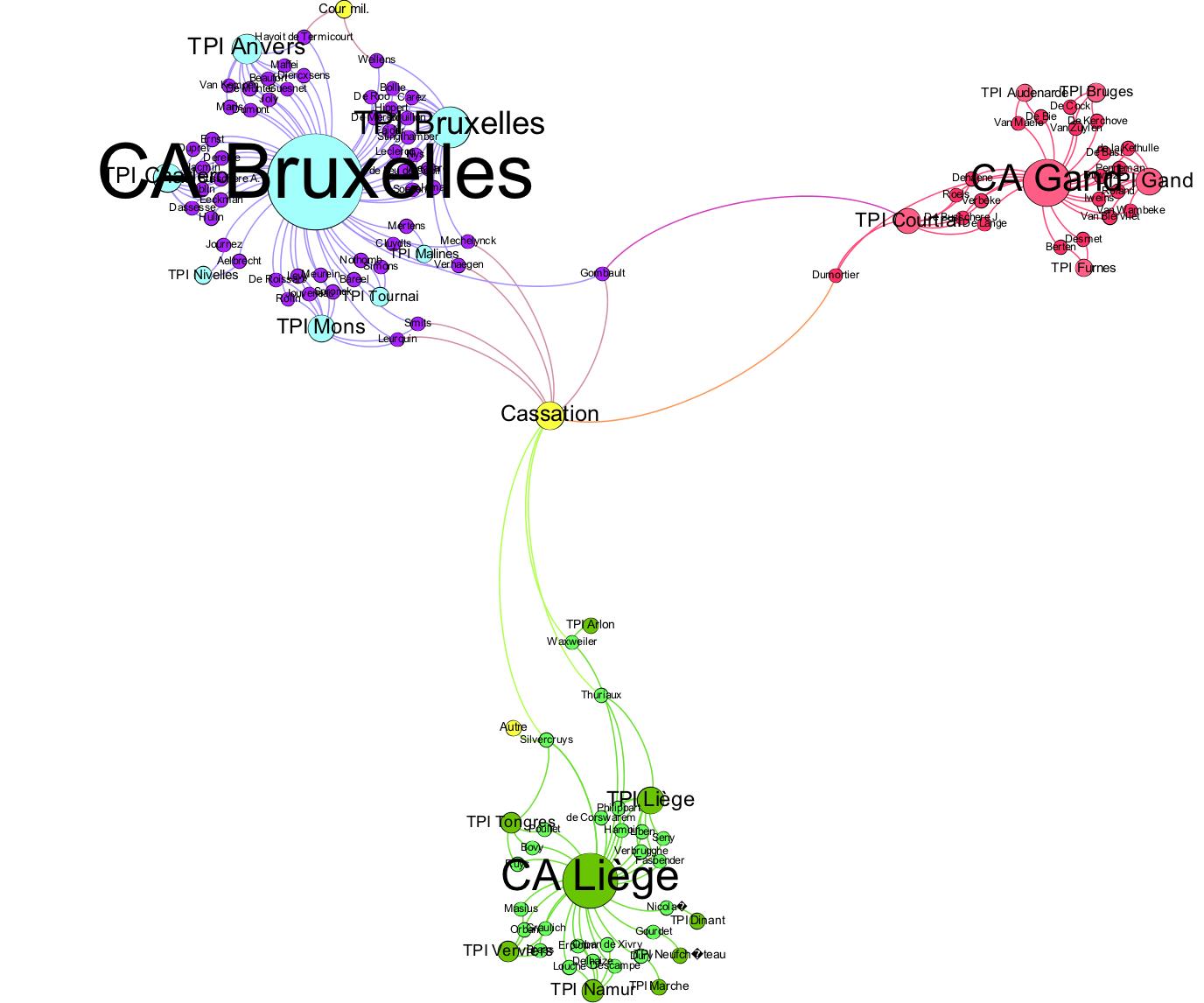Digithemis houses three applications “themes” related to the history of Belgian law and justice.
- The database “Belgian Magistrates” which aggregates information on these central actors of justice that are the magistrates as well as on the institutions in which they exercise.
- L’application “Cubes” which makes it possible to use judicial statistics, reflection of the activity of the courts and tribunals.
- A bibliographic directory containing several thousand sources dealing with the history of law and justice.
Each application is documented in its dedicated sub-menu. For any question regarding these applications, do not hesitate to use the contact form.
These applications, because of the amount of information they contain, represent a gold mine for quantitative studies or the creation of maps. Below is a brief overview of the possibilities they offer.
1. Database “Belgian Magistrates”
The data contained in the database “Belgian Magistrates” – both its individual paths and the evolution of jurisdictions – can be subject to different treatments (see the publications and communications made on this subject in the project bibliography).
This vast corpus, aggregating thousands of individual routes, shows particularly well the network analyzes, like the graph below illustrating the career path of Belgian appeal advisers in 1910 (made with the Gephi software). At a glance, we see the low geographical mobility of appeal advisers: the magistrate appointed in a court of appeal comes from, apart from clearly visible exceptions, of a court of first instance of the same jurisdiction (in blue, the courts within the jurisdiction of Brussels, in red those of the jurisdiction of Ghent, in green those of the jurisdiction of Liège). This graph also testifies to the fact that the advisers of the Court of Appeal of Ghent are more rarely promoted to the Court of Cassation than their counterparts in Brussels and Liège..
It should be noted that biographical information relating to the judiciary can also be used for trajectory analyzes, like the work of Claire Lemercier on the French commercial courts.
The data related to jurisdictions can, as well as the previous ones, be represented graphically. Below we can observe the evolution of the classes of justices of the peace in 1890 and in 1900. This class system, gone today, was established by the law of 25 november 1889 “reorganizing the salaries of justices of the peace and clerks and abolishing their emoluments and establishing court fees for the benefit of the State” (Moniteur belge of 6 December 1889). This law divided the judicial cantons into four classes, according to the number of their population. These numbers, and therefore the classes, were reviewed annually by royal decree. The salaries of justices of the peace varied, especially, according to the class of the canton in which they exercised. Contrary to what one might think at first glance, Wecan for instance see that in 1900, a judge from Fontaine-l’Evêque earned a better living than a judge from a big city like Charleroi, the latter being split into two cantons. These parameters must be taken into account for career studies.
2. Application Cubes
Judicial statistics, accessible through the Cubes application, can, as well as the previous ones, be highlighted in different ways whether through graphics or maps. An article will soon present the evolution of death penalty sentences in Belgium.
We can visualize in the animation below the net increase in the activity of the police courts in Belgium over a period of 30 years (from 1846 to 1876). We thank Sven Vrielinck for making the maps from Cubes data.


3. Bibliographic directory
The tab “Documentary resources” highlights the main digitized resources of the bibliographic repertoire. For instance, we find there, placed in their historical context, colonial legal journals or the volumes of judicial statistics.
